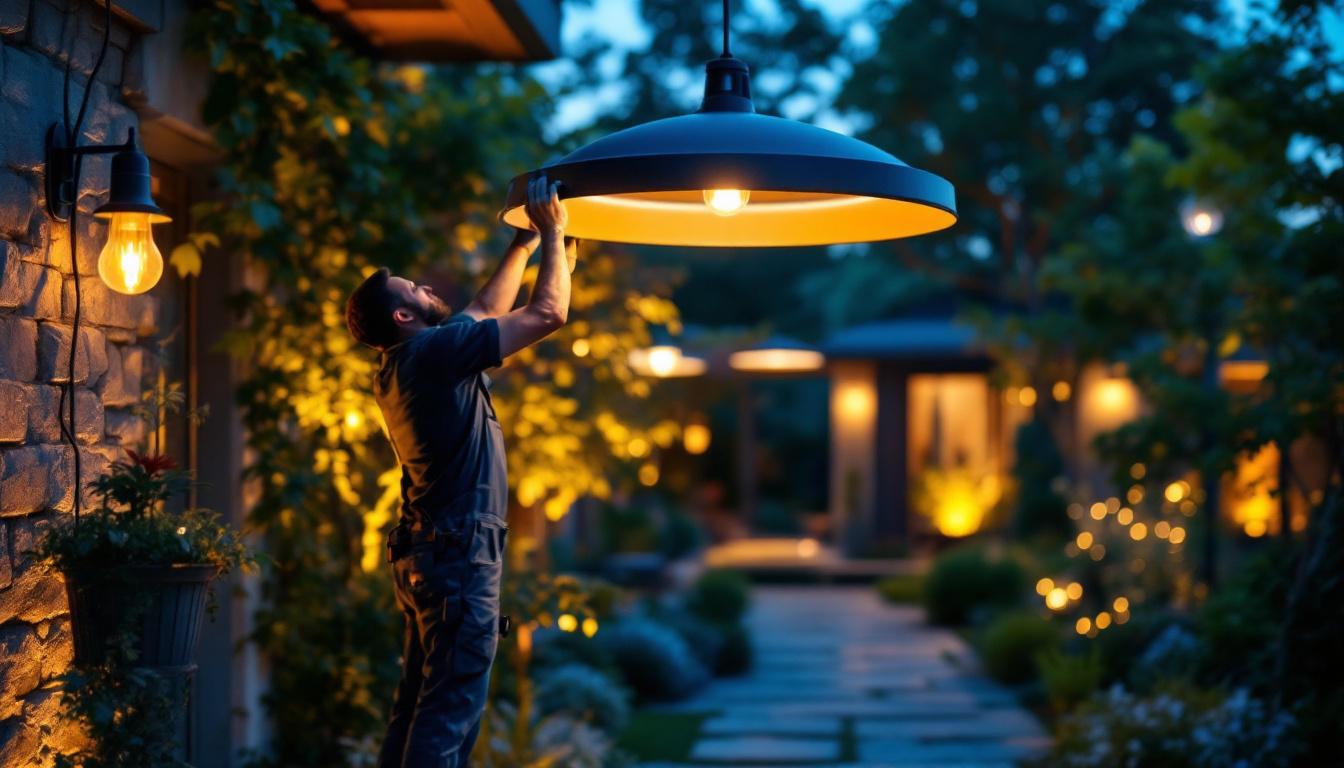
Lighting plays a crucial role in enhancing the aesthetics and functionality of any space. As the demand for energy-efficient solutions grows, LED space lights have emerged as a popular choice among lighting contractors. However, navigating the intricacies of LED lighting can be challenging. This article outlines essential do’s and don’ts for lighting contractors when working with LED space lights, ensuring optimal results for their projects.
Before diving into the practical aspects of installation and design, it is vital for lighting contractors to have a solid understanding of LED technology. LEDs, or Light Emitting Diodes, are semiconductor devices that convert electricity into light. Unlike traditional incandescent bulbs, LEDs are more energy-efficient, have a longer lifespan, and offer a variety of color temperatures and brightness levels. This technology has revolutionized the lighting industry, providing not only functional illumination but also enhancing the aesthetic appeal of spaces.
Furthermore, the environmental impact of LED technology cannot be overlooked. LEDs are free from toxic materials such as mercury, which is commonly found in fluorescent bulbs, making them a safer choice for both consumers and the environment. Their ability to last up to 25,000 hours or more means fewer replacements and less waste, contributing to a more sustainable future. As awareness of environmental issues grows, the demand for eco-friendly lighting solutions like LEDs continues to rise.
LED space lights provide numerous advantages that make them an attractive option for both contractors and clients. First and foremost, they consume significantly less energy than traditional lighting solutions, which can lead to substantial cost savings over time. Additionally, LEDs emit less heat, reducing the need for cooling systems in commercial spaces. This energy efficiency not only lowers utility bills but also contributes to a reduced carbon footprint, aligning with the growing trend towards sustainability in building design.
Moreover, the versatility of LED space lights allows for creative design possibilities. They are available in various shapes, sizes, and color temperatures, making it easier for contractors to tailor lighting solutions to meet specific client needs. This adaptability can enhance the overall ambiance of a space, contributing to improved aesthetics and functionality. For instance, adjustable color temperatures can create different moods—cooler tones for focused work environments and warmer tones for relaxation areas—allowing contractors to customize the lighting experience based on the specific activities that will take place in the space.
When selecting LED space lights for a project, contractors should consider several factors. The first is the intended use of the space. Different environments, such as offices, retail stores, or warehouses, may require different lighting solutions. Additionally, understanding the color temperature is crucial, as it can impact the mood and productivity of occupants. For example, a retail store may benefit from brighter, cooler lighting to highlight products, while a restaurant might opt for softer, warmer lighting to create an inviting atmosphere.
Another important consideration is the lumen output, which measures the brightness of the light. Contractors should ensure that the selected LED lights provide adequate illumination for the specific application. It’s also worth noting that the distribution of light can affect how a space feels; therefore, understanding beam angles and how light interacts with surfaces is essential. Finally, it is essential to evaluate the quality of the LED products, as not all options on the market are created equal. Investing in reputable brands can lead to better performance and longevity, ensuring that the lighting solution remains effective and visually appealing for years to come. Additionally, contractors should stay informed about advancements in LED technology, as innovations continue to emerge that can further enhance lighting design and efficiency.
To ensure successful installations and satisfied clients, lighting contractors should adhere to several best practices when working with LED space lights. These do’s can significantly enhance the overall quality of the lighting solutions provided.
Before making any decisions about lighting, contractors should conduct a comprehensive assessment of the space. This includes evaluating the layout, existing light sources, and the purpose of the area. Understanding these elements will help in determining the most effective placement and type of LED lights to use.
Additionally, contractors should consider the architectural features of the space. For instance, high ceilings may require different lighting solutions than lower ceilings. By taking these factors into account, contractors can create a lighting plan that maximizes both functionality and aesthetics.
Investing in high-quality LED space lights is essential for ensuring long-term performance and client satisfaction. Cheap, low-quality products may save money upfront but can lead to issues such as flickering, color inconsistency, and premature failure. It is advisable to source LED lights from reputable manufacturers known for their reliability and performance.
Moreover, contractors should stay informed about the latest advancements in LED technology. New products often come with improved efficiency, better color rendering, and enhanced features. Keeping up with industry trends can help contractors offer the best solutions to their clients.
Dimming capabilities can significantly enhance the versatility of LED space lights. By incorporating dimmers into the lighting design, contractors can provide clients with greater control over their environment. This can be particularly beneficial in spaces that serve multiple functions, such as conference rooms or dining areas.
When selecting dimmers, it is crucial to ensure compatibility with the chosen LED products. Not all dimmers work well with LED lights, and using incompatible options can lead to performance issues. Therefore, contractors should consult product specifications and, when necessary, seek advice from manufacturers.
While there are many best practices to follow, there are also common pitfalls that lighting contractors should avoid when working with LED space lights. Recognizing these don’ts can help prevent costly mistakes and ensure successful project outcomes.
One of the critical aspects of LED technology is its heat management. While LEDs generate less heat than traditional bulbs, they still produce some heat that needs to be dissipated effectively. Failing to account for heat management can lead to reduced performance and a shortened lifespan of the lights.
Contractors should ensure that LED fixtures are installed with adequate ventilation and that they are not placed in enclosed spaces without proper airflow. Additionally, selecting fixtures with built-in heat sinks can help manage heat more effectively, contributing to the longevity of the installation.
The Color Rendering Index (CRI) is a crucial factor in determining how accurately a light source displays colors. A higher CRI value indicates better color rendering, which is particularly important in settings where color accuracy is essential, such as retail environments or art galleries.
Contractors should avoid using LED lights with a low CRI for applications where color fidelity is critical. Instead, they should aim for products with a CRI of 90 or above to ensure that the colors in the space appear vibrant and true to life.
When designing lighting solutions, it is essential to consider future maintenance needs. LED space lights may have a longer lifespan than traditional lighting, but they are not maintenance-free. Contractors should plan for easy access to fixtures for bulb replacements or repairs, especially in hard-to-reach areas.
Additionally, providing clients with information on how to maintain their LED lighting systems can enhance their satisfaction. This may include tips on cleaning fixtures and understanding when to seek professional assistance for repairs or upgrades.
Energy efficiency is one of the primary reasons clients choose LED space lights. However, maximizing this efficiency requires thoughtful planning and execution. Contractors play a vital role in ensuring that their lighting designs not only meet aesthetic goals but also contribute to energy savings.
Incorporating smart technology into lighting designs can significantly enhance energy efficiency. Smart lighting systems allow for remote control, scheduling, and automation, enabling clients to optimize their energy use. For example, lights can be programmed to turn off when spaces are unoccupied or dimmed during daylight hours.
Contractors should stay informed about the latest smart lighting solutions and be prepared to offer these options to clients. This not only adds value to the service but also positions the contractor as a knowledgeable expert in the field.
Lighting controls, such as occupancy sensors and daylight harvesting systems, can further enhance energy efficiency. Occupancy sensors automatically turn lights on and off based on the presence of people in a space, while daylight harvesting systems adjust artificial lighting based on the amount of natural light available.
By integrating these controls into the lighting design, contractors can help clients achieve significant energy savings while maintaining a comfortable and well-lit environment.
LED space lights offer an array of benefits for both contractors and clients, but navigating the complexities of this technology requires careful consideration and planning. By following the outlined do’s and don’ts, lighting contractors can ensure successful installations that meet the needs of their clients while maximizing energy efficiency.
Ultimately, the goal is to create lighting solutions that enhance the beauty and functionality of spaces while providing long-term value. By staying informed about industry trends and best practices, contractors can position themselves as trusted experts in the field of LED lighting.
Ready to elevate your lighting projects with the best LED space lights on the market? At LumenWholesale, we provide lighting contractors like you with the highest quality, spec-grade lighting products at prices that can’t be beaten. Say goodbye to local distributor markups and hello to our extensive selection that meets rigorous industry standards. Plus, with free shipping on bulk orders, you can trust that you’re getting premium lighting solutions at the best value — with no hidden fees. Don’t compromise on quality, affordability, or convenience. Make your next project shine and explore our wholesale lighting options today.

Discover the must-have large outdoor lighting tools that every contractor needs to illuminate spaces effectively.

Discover how to enhance your lighting efficiency with AC plug switches.

Discover the ultimate guide to selecting and installing pendants for lights, tailored specifically for lighting contractors.

Discover the transformative impact of 2X2 LED drop ceiling lights on modern lighting projects.